An official website of the United States government
 United States Department of Labor
United States Department of Labor
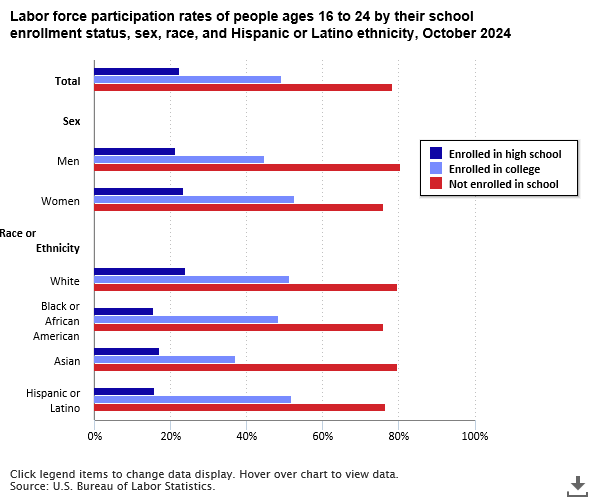
In October 2024, 21.7 million 16- to 24-year-olds, or 55.5 percent of youth, were enrolled in high school (9.9 million) or in college (11.8 million). College students continued to be about twice as likely as high school students to participate in the labor force (49.2 percent versus 22.3 percent). The labor force participation rate is the proportion of the population that is employed or looking for work.
read full article »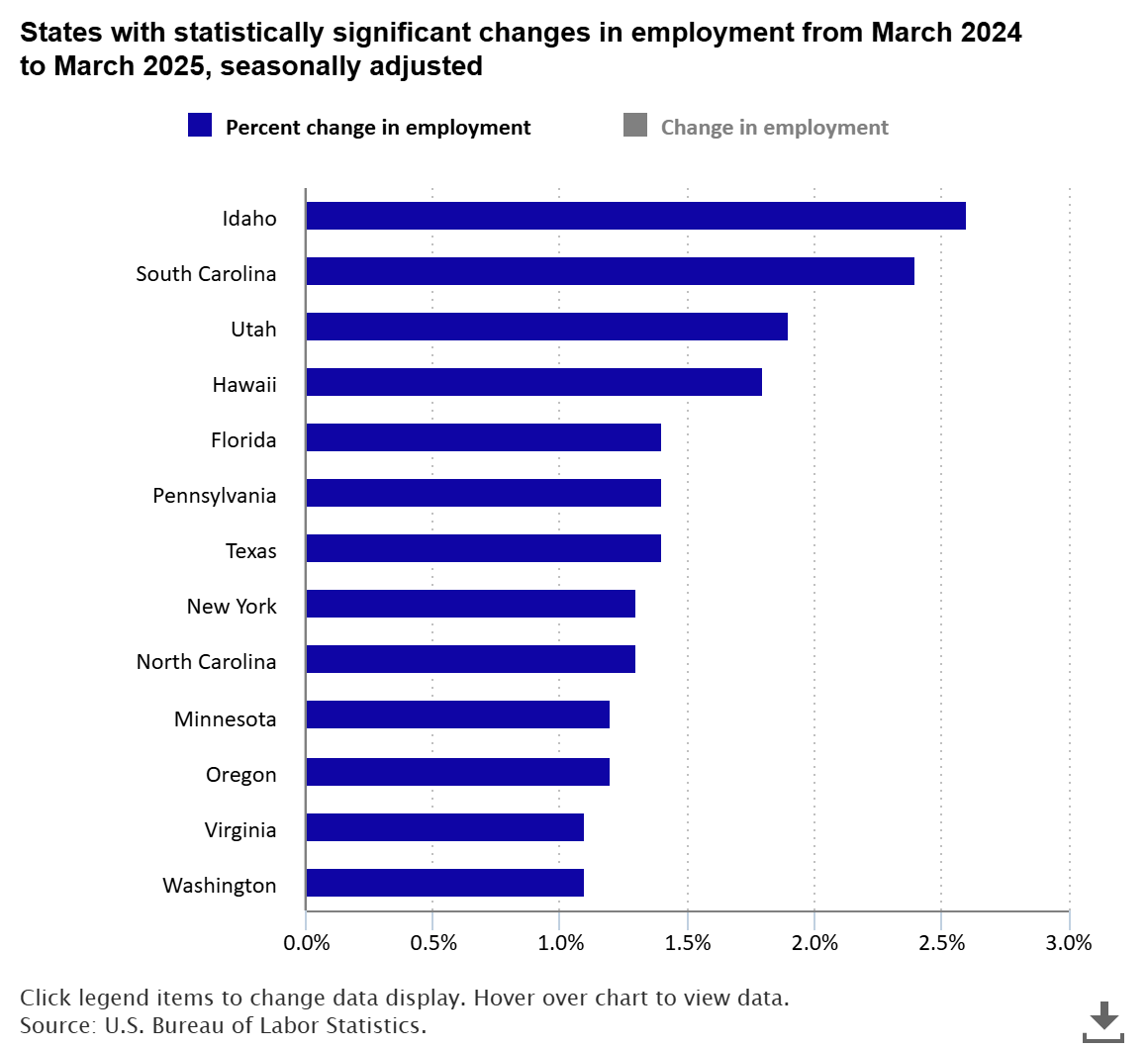
From March 2024 to March 2025, nonfarm payroll employment increased in 13 states and was essentially unchanged in 37 states and the District of Columbia.
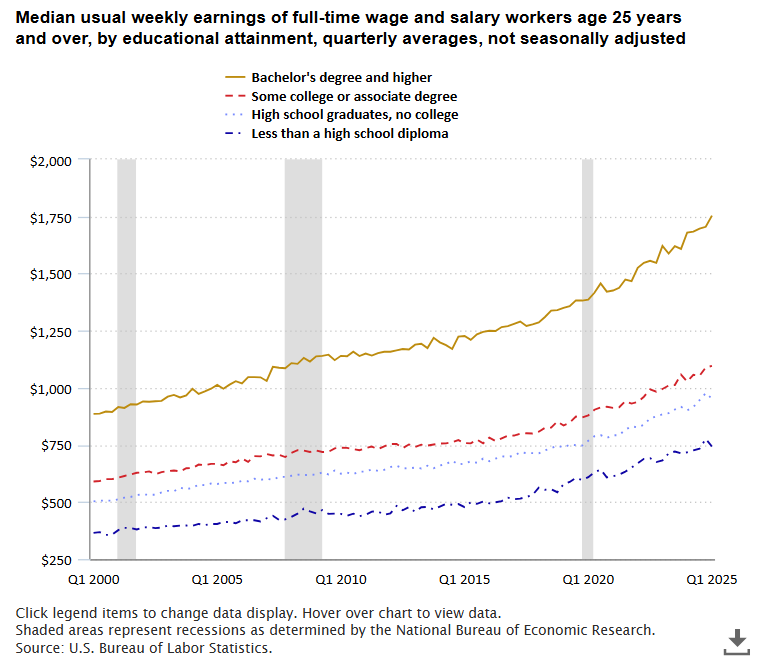
Median weekly earnings of the nation’s 110.8 million full-time wage and salary workers age 25 and over were $1,258 in the first quarter of 2025. This was 5.7 percent higher than a year earlier, compared with a gain of 2.7 percent in the Consumer Price Index for All Urban Consumers (CPI-U) over the same period. At each level of educational attainment, workers’ weekly earnings were around double what they were 25 years earlier, in the first quarter of 2000.
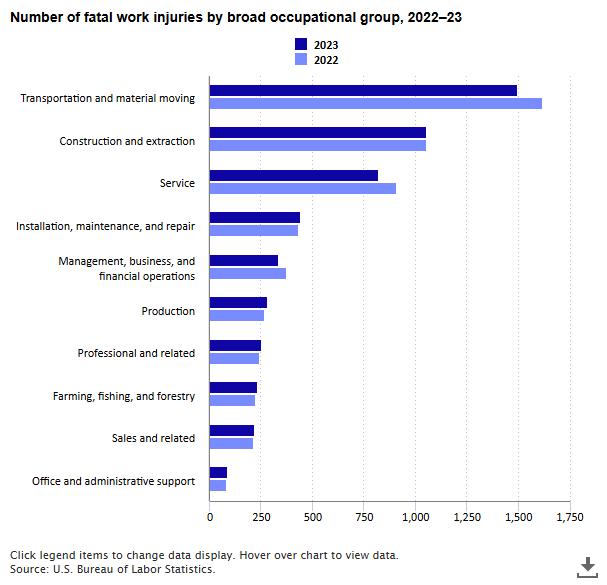
Workers’ Memorial Day, April 28, annually commemorates those who have been injured, disabled, or killed on the job. In the United States, there were 5,283 fatal work injuries in 2023, down from 5,486 in 2022. Among broad occupational groups, transportation and material moving occupations had the most deaths with 1,495, accounting for 28.3 percent of total fatal work injuries, followed by construction and extraction occupations with 1,055 deaths (20.0 percent).
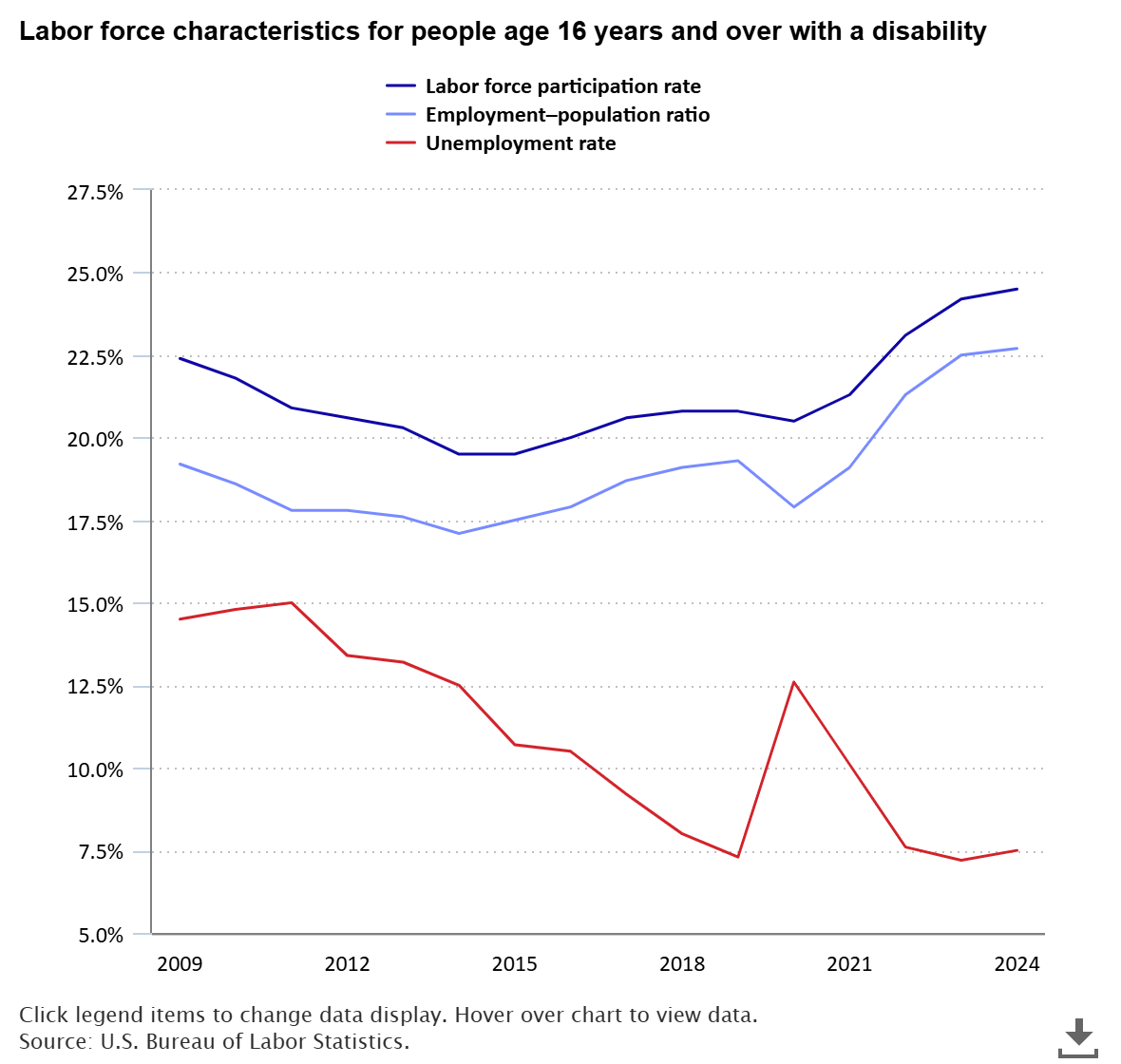
In 2024, the employment–population ratio for people with a disability reached a series high of 22.7 percent since data were first reported in June 2008. The ratio was little changed from 22.5 percent a year earlier. The labor force participation rate for people with a disability, at 24.5 percent, also reached a series high in 2024.

